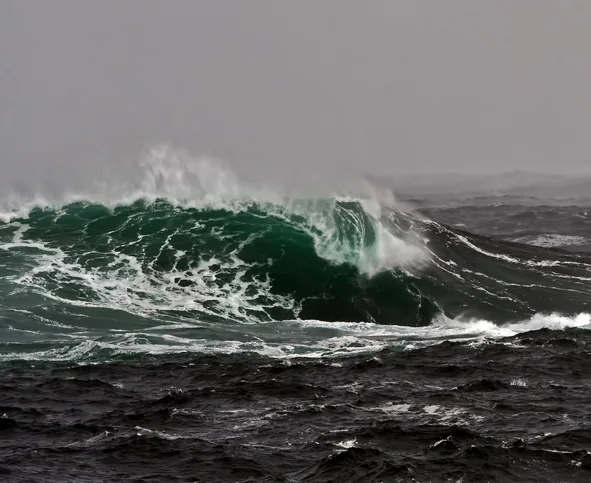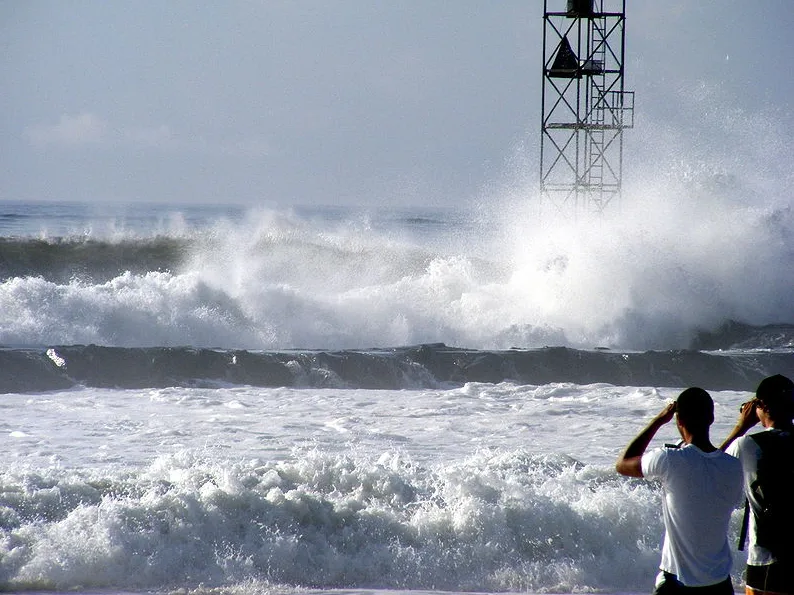
New natural phenomena, 'stormquakes', has been discovered
Many of these stormquakes have been recorded near the shores of Canada
Hurricanes and nor'easters are some of the most powerful forces of nature and they not only bring destructive flooding and torrential rains on land, they literally shake the sea floor.
A study that was published in Geophysical Research Letters states that this natural phenomenon, called stormquakes, can cause the sea floor to shake at an intensity that is equivalent to a magnitude 3.5 earthquake and can last for days.
Since energy is continuously transferred between the atmosphere and oceans, the scientists in this study explain that stormquakes are triggered by pressure on the sea floor from large waves that form during powerful storms.
The researchers found that both hurricane and winter storms can cause brief seismic activity near North American coastlines. The stormquakes can last from a few hours to several days and follow the leading edge of the storm track.
This study reports that 14,077 stormquakes have occurred between September 2006 and February 2015 offshore Nova Scotia, Newfoundland and Labrador, British Columbia (Haida Gwaii), New England, Florida, and the Gulf of Mexico. This phenomenon likely occurs in Western Europe and Western Australis in addition to North America.
The researchers analyzed Hurricane Bill, which was a Category 4 hurricane before striking Newfoundland as a tropical storm in August 2009, to further understand how the sea floor was impacted. As Bill approached, several stormquakes located offshore New England and Nova Scotia were detected and caused continent-wide ground motions that lasted for about 30 hours.

Waves from Hurricane Bill in New Jersey, August 22, 2009. Credit: Wikimedia Commons
While winter storms differ from hurricanes, the study found that there were no obvious differences from the stormquake activities. The stormquakes that were generated by a 2014 nor'easter offshore Nova Scotia and New England, which researchers say indicate that the large waves generated by the storms created the stormquakes.
The researchers note that while stormquakes frequently occur in the Maritimes and Labrador Sea in the North American margin, there is an absence of stormquakes offshore Mexico and the east coast of the USA from New Jersey to Georgia despite the occurrence of many major hurricanes during the study period.
SEE ALSO: How this deadly fungus rode a tsunami to British Columbia
Given the differences in the geographic structures of oceans in North America compared to regions further south in the Pacific and offshore Mexico, the researchers suggest that that absence of stormquakes in these regions could be due to the energy from storms interacting with the sea floors in different ways.
Scientists and researchers do not typically monitor the type of shaking that are created by stormquakes, and the researchers in this study state that they hope this new research will provide greater insight into how the layers of the Earth interact with the weather and atmosphere.
Thumbnail image submitted by Harold Bradley. Captured in Flatrock, Newfoundland in 2016.











